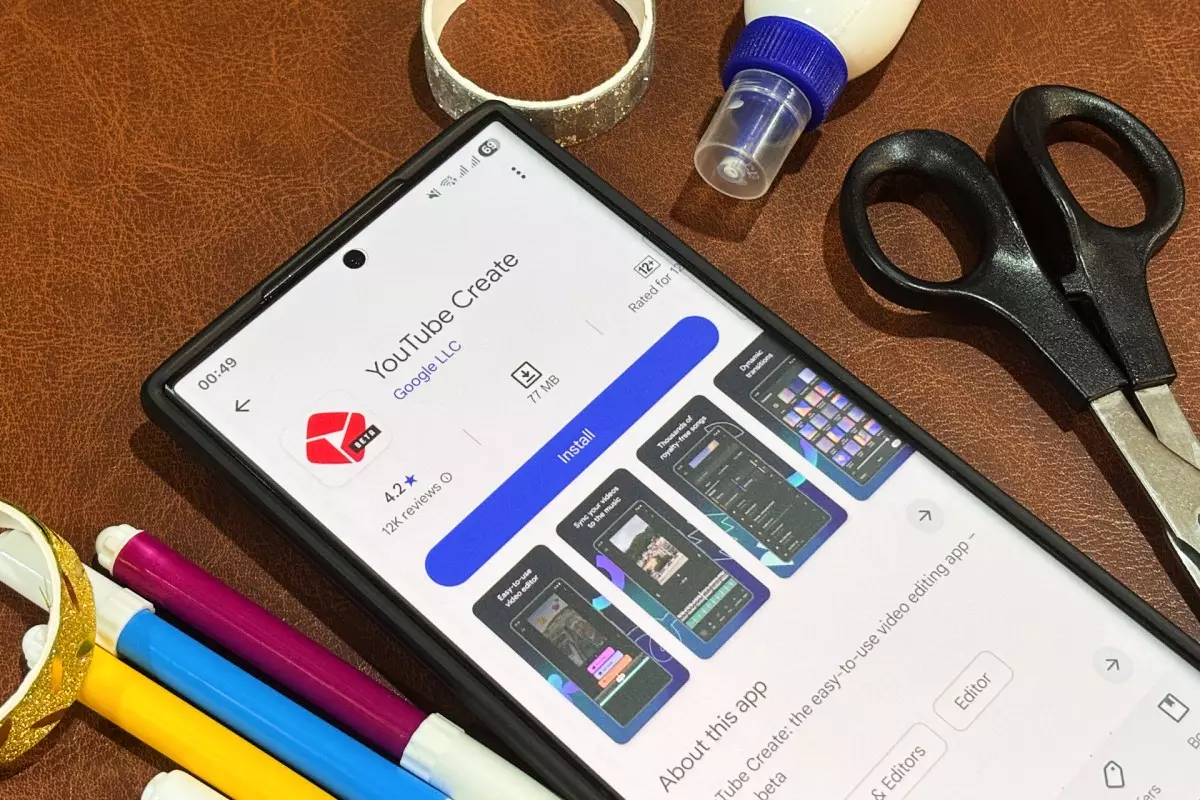Nearly two years after introducing YouTube Create exclusively on Android, Google is finally preparing to bring the app to iOS devices—a move that signals its commitment to capturing a broader content creation audience. While the delay might raise eyebrows, this strategic expansion suggests that Google is aligning its resources thoughtfully, aiming to learn from its Android experience before tackling Apple’s competitive ecosystem. The confirmation comes through job postings targeting iOS engineers in India, where a significant user base is emerging. The choice of India for this development hub reflects Google’s understanding that the region is not only ripe with users but also a key battlefield for mobile apps with massive growth potential.
Initially launched in the U.S. and a handful of markets, YouTube Create sought to empower creators with an array of features such as stickers, GIFs, and effects, optimizing for both YouTube Shorts and traditional video formats. Its development was informed by feedback from thousands of creators, highlighting Google’s earnest effort to build an app tailored closely to user demands rather than rushing a product to market. Yet, if we measure success merely by user numbers and engagement, YouTube Create’s performance on Android has been underwhelming compared to dominant competitors.
The Overshadowing Giants: CapCut and InShot
The competitive landscape in mobile video editing apps is dominated by ByteDance’s CapCut and the versatile InShot. Sensor Tower data shines a glaring spotlight on the disparity: where CapCut and InShot have tens of millions of downloads monthly, YouTube Create struggles to reach half a million downloads in the same timeframe. CapCut’s integration with TikTok, an ecosystem with staggering user engagement, has cemented its position as the go-to video editor for millions. InShot’s broad appeal and higher retention rates further illustrate the near-insurmountable challenge facing newcomers like YouTube Create.
Engagement metrics deepen the story of disparity. Average user time, session frequency, and retention rates for YouTube Create are significantly trailing. For instance, a 90-day retention rate of around 1% exposes a glaring issue with keeping users engaged long term—especially when competitors maintain rates several times higher. This critical flaw hints that while curiosity may draw users to YouTube Create initially, the app currently lacks the compelling features or ecosystem integration necessary to insist they stay.
Signs of Growth and Loyalty Amidst the Struggle
Despite these setbacks, YouTube Create isn’t simply languishing without hope. An encouraging trend is its 28% year-over-year growth in monthly active users this quarter—surpassing CapCut’s 9% rise and InShot’s decline. This acceleration suggests that the app is beginning to cultivate a loyal subset of creators who find genuine value in its tools. While absolute numbers are still small, this momentum is a vital sign that YouTube Create’s user base is stabilizing and perhaps poised to grow substantially with the iOS release.
A nuanced insight arises when analyzing the shift from downloads to active use: declining downloads paired with rising engagement imply that the app is starting to resonate well with a dedicated community rather than casual dabblers. This deeper user base could be the foundation Google needs to build on if it wishes to compete beyond raw download statistics.
Diversifying Geography and Market Penetration
Most striking is how YouTube Create is refusing to remain an India-centric app. Last year, India accounted for two-thirds of its user base; now, that number has shrunk to just over half, as new markets like Indonesia, Germany, Brazil, and the UK steadily grow their shares. The rise in daily-to-monthly active user ratios in India, rising to 12%, underscores increasing stickiness—people aren’t just downloading the app; they’re returning consistently.
Furthermore, YouTube Create is experiencing explosive year-over-year growth in several global markets, including Spain (119%), South Korea (91%), France (89%), and Singapore (71%). This international momentum is critical because global adoption has often determined the fate of digital platforms. A broader geographic spread also mitigates risks of reliance on single markets and can help foster a more diverse creator community.
Challenges and the Road Ahead
Google’s entrée into iOS with YouTube Create will undoubtedly open new avenues but poses considerable challenges. The iOS ecosystem is fiercely competitive, with entrenched players supported by powerful social media platforms and polished native editing apps. An additional hurdle is overcoming consumer loyalty towards apps like CapCut, whose early start and TikTok integration provide unparalleled convenience and reach.
Google’s challenge is twofold: it must leverage YouTube’s massive user base and content ecosystem to create seamless synergy and improve retention and engagement through innovative features and user experience enhancements. Google also needs to expand international appeal carefully, tailoring functionalities for cultural preferences without losing the app’s core simplicity and creator-first focus.
The pursuit of this balance will test Google’s ability to innovate amidst tough competition and rapidly changing creator preferences. In many ways, YouTube Create’s journey is emblematic of a larger question: can tech giants like Google disrupt fast-moving, culturally attuned startups in creator-centric tools without fully integrating their platforms? The coming months will be telling as YouTube Create embarks on this new iOS chapter in a crowded and unforgiving video editing arena.

